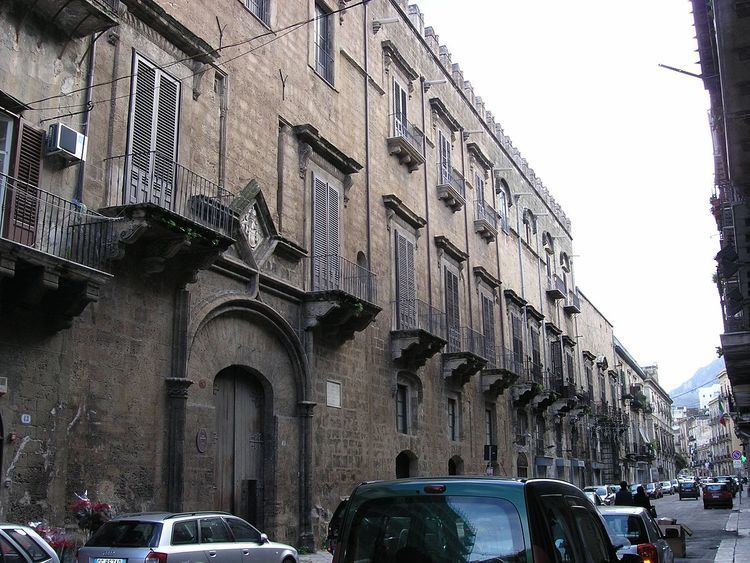Construction started 1495 Province Province of Palermo | Opened 1501 Function Palace | |
 | ||
Address Via Giuseppe Garibaldi, 23, 90133 Palermo, Italy Hours Open today · 9AM–7PMTuesday9AM–7PMWednesday9AM–1PMThursday9AM–1PMFridayClosedSaturday9AM–7PMSundayClosedMonday9AM–1PMSuggest an edit Similar Santa Maria dello Spasimo, Palazzo Abatellis, San Francesco d'Assisi, Palazzo Sclafani, San Cataldo - Palermo | ||
19 12 13 palazzo ajutamicristo ultimati i lavori di restauro
Palazzo Ajutamicristo is a palace in Palermo, Sicily.
Contents
- 19 12 13 palazzo ajutamicristo ultimati i lavori di restauro
- La memoria storica di palermo a palazzo ajutamicristo
- References
It was constructed between 1495 and 1501 by Guglielmo Ajutamicristo, Baron of Misilmeri and Calatafimi. Originally a merchant Ajutamicristo made his fortune trading in Sicilian cheese and cereals. The palazzo was built to celebrate and display the family's newly acquired wealth.
The architect selected was the already eminent Matteo Carnilivari and a site chosen in the street now called Via Garibaldi, close to the now demolished Palermo's Termini Gate. The original plan was for a far larger and extravagant house, however these plans had to be modified, and financial restraint exercised, thus the completed house was smaller than originally intended.
In spite of its reduced size the house became a centre of Sicilian high society, and was considered a residence superior to Palermo's royal palace; as a consequence the Ajutamicristo's entertained many leading political figures of the day: the Queen of Naples was entertained in great style at the house on 1500, and 1535 the Emperor Charles V.
The Ajutamicristo's ownership of the house was to be short-lived, and in 1588 the owner Margherita Ajutamicristo sold the building to Francesco Moncada, Ist Prince of Paternò. The property remained in the ownership of the Paternò family for two hundred years until in the 18th century when it was sold to Baron Calefati di Canalotti in whose family it has remained until the present day.
The Calefati family had many of the salons remodelled, of particular note is the frescoed ballroom with its ceiling painted by Giuseppe Crestadoro depicting The Glory of the Virtuous Prince.
